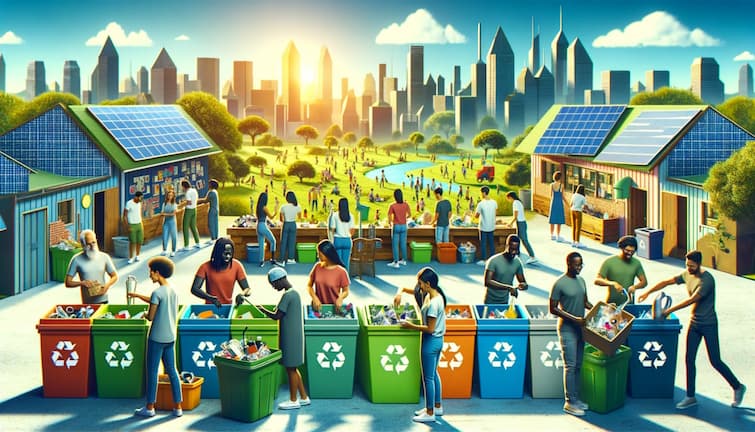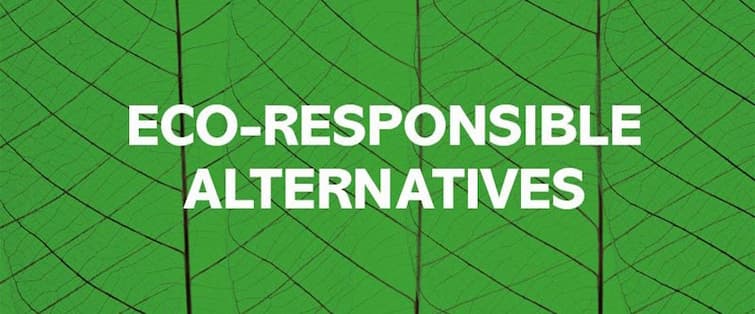
13 May, 2024
The Environmental Impact of Stubby Holders: What You Need to Know
We all love a chilled drink on a hot Aussie day, but have you ever wondered about the environmental footprint of those stubby holders we use to keep our drinks cold? The manufacturing and disposal of stubby holders can have an environmental impact and I wanted to shed light on that today.
The Environmental Concern
Here's the sticky wicket: the manufacturing and disposal of stubby holders can have an environmental impact. Most are made from synthetic materials like polyurethane foam or neoprene. These materials are derived from petroleum and involve energy-intensive processes to produce.
1. Polyurethane Foam
- Raw Material Extraction: Polyurethane foam is made from compounds derived from crude oil. The extraction of crude oil is an energy-intensive process, contributing to greenhouse gas emissions.
- Chemical Processing: The production of it involves several chemical reactions, often requiring high temperatures and pressures, leading to significant energy use.
- VOC Emissions: During the manufacturing process, volatile organic compounds (VOCs) are released.
- VOCs can contribute to air pollution, forming ground-level ozone and particulate matter. These have known health impacts, including respiratory problems and exacerbating conditions like asthma.
2. Neoprene
- Petroleum-Based: Like polyurethane foam, neoprene is also derived from petroleum products. Its production similarly contributes to greenhouse gas emissions and environmental degradation associated with oil extraction and refining.
- Energy-Intensive Manufacturing: Neoprene production involves polymerization of chloroprene, which is an energy-intensive process. This adds to the overall carbon footprint of the material.
- Durability vs. Biodegradability: Neoprene is praised for its durability, which is a double-edged sword. While it means a longer life for the product, it also means that when a neoprene stubby holder is discarded, it doesn't break down easily in the environment. This contributes to the growing problem of landfill waste.
Disposal and Long-Term Environmental Impact
- Non-Biodegradability: Both polyurethane foam and neoprene are not biodegradable. When disposed of in landfills, they can persist for many years, contributing to the growing global problem of plastic pollution.
- Recycling Challenges: The recycling of these materials is complex and not widely available. The mixed material nature of stubby holders makes them difficult to process in standard recycling facilities.
- Potential for Microplastic Pollution: As these materials break down, they can fragment into smaller pieces, potentially becoming microplastics. These microplastics can find their way into waterways and oceans, posing a threat to marine life and entering the food chain.
Broader Environmental and Health Concerns
- Ecosystem Impact: The extraction and processing of the raw materials used in their production can have detrimental effects on ecosystems, including habitat destruction and pollution.
- Human Health Risks: The chemicals used in the production of these materials can pose risks to the health of workers in the manufacturing industry, as well as communities living near production facilities.
In summary, while they are a convenient and popular product, their environmental footprint is significant, from the energy-intensive and polluting manufacturing process to their long-term persistence in landfills and potential contribution to microplastic pollution. This highlights the importance of seeking more sustainable materials and disposal methods for such everyday items.
The Recycling Challenge

Recycling stubby holders is a bit of a puzzle. Because they're made from mixed materials, they're not easily recyclable in the traditional sense. This adds to their environmental burden since they often end up in landfill.
Below are some of the specific hurdles faced in recycling these popular drink accessories:
1. Mixed Material Composition
- Diverse Components: They are typically made from a combination of materials, including polyurethane foam or neoprene, and often have additional elements like fabric coverings or printed designs. This mix complicates the recycling process, as different materials require different recycling methods.
- Separation Difficulty: The process of separating these materials for recycling is often more complex and costlier than the value of the recovered materials. This is especially true for small-scale items, where the manual labour required for separation can be extensive.
2. Limited Recycling Infrastructure
- Specialised Facilities: Not all recycling facilities are equipped to handle the complex process of breaking down materials like polyurethane foam and neoprene. As a result, these items are often not accepted in standard curbside recycling programs.
- Economic Viability: The economic aspect plays a significant role. The cost of recycling complex materials can outweigh the benefits, leading to a lack of incentives for recycling facilities to invest in the necessary technology and processes.
3. Environmental and Economic Considerations
- Energy-Intensive Process: Even when recycling is possible, the process can be energy-intensive, raising questions about the overall environmental benefit. This is particularly relevant when considering the carbon footprint of recycling versus producing new materials.
- Market Demand: There's limited market demand for recycled materials from stubby holders. Without a stable market for these materials, recycling them becomes less economically viable.
4. Downcycling vs Recycling
- Quality Degradation: When materials are recycled, they often undergo "downcycling," where the quality of the material degrades. This means they are recycled into lower-quality, less durable products with limited use.
- End-of-Life Options: Eventually, these downcycled products will still end up in landfills, as their recycling potential diminishes after each cycle.
5. Consumer Awareness and Participation
- Lack of Awareness: Many consumers are unaware of the complexities involved in recycling them, leading to incorrect disposal methods. This lack of awareness contributes to the high volume of these items ending up in landfills.
- Engagement Challenges: Engaging consumers in the correct disposal or recycling of these products is challenging, especially when convenient and accessible recycling options are not available.
Their recycling presents significant challenges due to their mixed material composition, the specialised nature of recycling facilities required, economic considerations, and the broader environmental impact. Addressing these challenges requires a combination of improved recycling technologies, increased market demand for recycled materials, and greater consumer awareness and participation in proper disposal and recycling practices.
Eco-Friendly Alternatives

But it's not all doom and gloom, mates! There are eco-friendlier options out there. Some companies are now making stubby holders from recycled or sustainable materials. Options include ones made from recycled wetsuits, organic cotton, or even upcycled materials like old tyres. These alternatives reduce the reliance on virgin materials and help keep stuff out of landfill.
1. Recycled Wetsuits
- Source Material: Recycled wetsuits, often made from neoprene, provide a durable and insulating material for stubby holders. By reusing wetsuits, companies can repurpose a high-quality material that would otherwise end up in landfills.
- Environmental Benefit: This approach reduces waste and the need for new raw materials. It also extends the life cycle of the neoprene, thereby decreasing its overall environmental impact.
- Product Quality: It also maintains the insulating properties required for an effective stubby holder, ensuring that the product is not only eco-friendly but also functional.
2. Organic Cotton
- Sustainable Agriculture: Organic cotton is grown without harmful pesticides and fertilizers, making it a more environmentally friendly option compared to conventional cotton.
- Reduced Water Usage: Farming typically requires less water, further reducing its environmental footprint.
- Biodegradability: Unlike synthetic materials, it is biodegradable, ensuring the ones made from it will not contribute to long-term waste in landfills.
3. Upcycled Tyres
- Waste Reduction: Using old tyres to create them is a form of upcycling, where waste materials are transformed into new, useful products. This helps in reducing tyre waste, a significant environmental concern.
- Durability: Tyres are designed to be durable and withstand extreme conditions, properties that are beneficial for creating long-lasting stubby holders.
- Unique Aesthetic: They offer a unique and rugged look, appealing to a segment of consumers interested in both functionality and style.
4. Additional Sustainable Materials
- Bamboo Fibre: Bamboo is a fast-growing, renewable resource that can be used to create fabric for them. It is biodegradable and has a minimal environmental footprint.
- Recycled Plastics: Some are made from recycled plastics, such as PET bottles. This approach helps in reducing plastic waste and the demand for new plastic production.
- Plant-Based Foams: Innovations in material science have led to the development of plant-based foams that can serve as an alternative to traditional polyurethane foam. These materials are often derived from renewable resources like cornstarch or sugarcane.
Consumer Considerations
- Availability: While these eco-friendly options are increasingly available, they might not be as widely accessible as traditional styles. Consumers may need to seek them out through specialty retailers or online platforms.
- Cost: In some cases, eco-friendly stubby holders may be more expensive than their conventional counterparts, reflecting the higher cost of sustainable materials and production methods.
- Lifespan and Care: Consumers should consider the lifespan and care requirements of these alternatives, as some may differ from traditional styles in terms of durability and maintenance.
They are an important step towards reducing environmental impact. These alternatives, made from recycled wetsuits, organic cotton, upcycled tyres, and other sustainable materials, offer practical solutions while supporting environmental conservation efforts. As consumer demand for sustainable products grows, it's likely that more innovative and eco-friendly options will continue to emerge in the market.
What Can You Do?

As a consumer, you've got power. Here are a few tips:
1. Choose Wisely: Opt for Sustainable or Recycled Materials
- Research the Materials: Before purchasing, look into what materials are used. Choose items made from recycled, upcycled, or sustainable materials like organic cotton, recycled neoprene, or bamboo fibre.
- Check Certifications: Look for certifications that indicate sustainable practices, such as the Global Organic Textile Standard (GOTS) for organic materials or certifications for recycled content.
- Consider the Brand’s Values: Choose brands that are transparent about their manufacturing processes and committed to sustainability.
2. Reuse and Repurpose: Maximising its Life Cycle
- Regular Maintenance: Take care of it by cleaning it regularly and storing it properly, which can extend its lifespan.
- Creative Repurposing: If it is wearing out, think of ways to repurpose it. For instance, cut it to use as grip pads for opening jars, or use it as a protective sleeve for small items.
- DIY Projects: For those who are crafty, old ones can be sewn together to create mats, coasters, or even protective casings for electronics.
3. Spread the Word: Educating and Influencing Others
- Share Information: Educate your friends and family about the environmental impact and the benefits of choosing eco-friendly alternatives.
- Gift Responsibly: When giving gifts, choose sustainable ones. It’s a great way to introduce others to eco-friendly products.
- Social Media Influence: Use your social media platforms to raise awareness about sustainable options and share information about green companies.
4. Support Green Companies: Backing Businesses that Prioritise Sustainability
- Buy from Eco-Friendly Brands: Support companies that use sustainable materials, have ethical labour practices and demonstrate a commitment to reducing their environmental impact.
- Participate in Programs: Some companies have take-back or recycling programs for their products. Participating in these programs ensures yours is disposed of responsibly at the end of its life.
- Encourage Local Businesses: Encourage local stores to stock sustainable ones and support local artisans who may use eco-friendly materials.
5. Additional Actions You Can Take
- Stay Informed: Keep up-to-date with the latest in sustainable materials and eco-friendly innovations.
- Community Engagement: Participate in or organise community events focused on sustainability, such as recycling drives or eco-friendly product fairs.
- Advocate for Change: Contact manufacturers and express your desire for more sustainable products. Consumer demand can drive significant changes in how products are made.
Every consumer has the potential to make a significant impact through mindful purchasing, reusing, and advocating for sustainable practices. By choosing wisely, reusing and repurposing, spreading the word, and supporting green companies, we can collectively contribute to a more sustainable and environmentally friendly world.
Wrapping Up
So, next time you're enjoying a cold one with a stubby holder in hand, give a thought to its environmental impact. Making more sustainable choices can make a big difference.
The Stubby Holders Team


